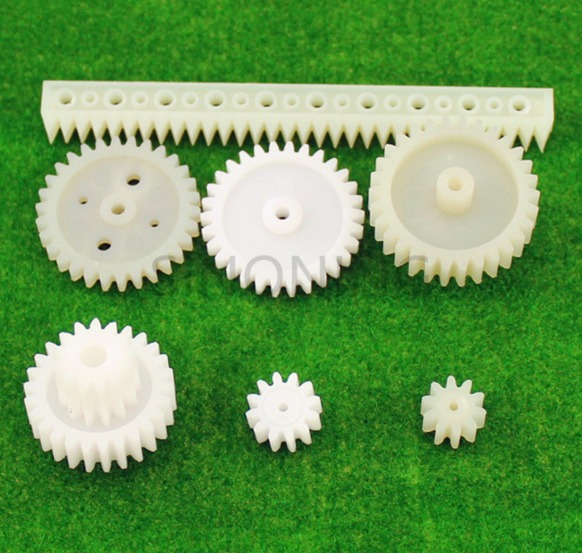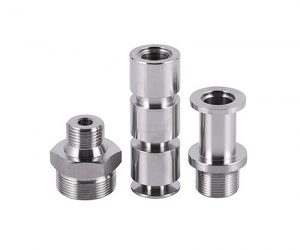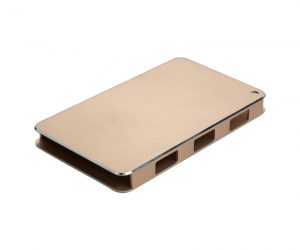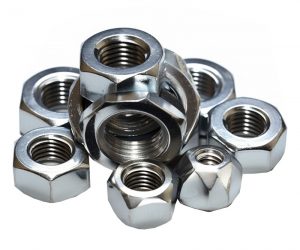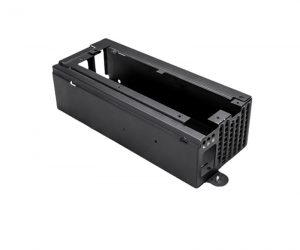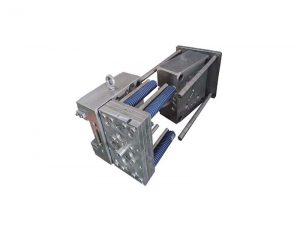The silent revolution in mechanical systems is underway, driven by the insidious yet efficient usurpation of metal by its plastic counterpart. This isn't merely a substitution; it's a paradigm shift. We delve into the complex and often unpredictable world of replacement plastic gears, exploring their intricate role in revitalizing efficiency and functionality within a vast spectrum of mechanical applications. This analysis transcends a simple overview; it’s a dissection of the material science, engineering choices, and the often-overlooked subtleties that determine success or failure.
The genesis of this plastic insurgency lies in the inherent limitations of traditional metal gears. While possessing strength, metal gears succumb to the relentless attrition of friction, corrosion, and fatigue, leading to catastrophic failure and costly downtime. Plastic gears, however, offer a compelling alternative, leveraging their inherent advantages to mitigate these vulnerabilities. Their lightweight nature reduces inertia, enhancing responsiveness and minimizing energy waste. Furthermore, the design space afforded by plastic injection molding allows for intricate geometries previously unattainable in metal, leading to enhanced performance and durability in specific applications.
But the advantages extend beyond mere weight savings. The selection of the appropriate plastic material is crucial, a decision dictated by the unforgiving demands of the application. Polyoxymethylene (POM), with its exceptional strength and wear resistance, reigns supreme in high-speed, high-stress environments. Nylon (PA), boasting superior toughness and oil resistance, finds its niche in humid or chemically aggressive conditions. Polyurethane (PU), with its inherent resilience to weathering and chemical degradation, is the preferred choice for outdoor applications. The choice, however, is not a simple matter of selecting the "best" material; it's a complex optimization problem, balancing cost, performance, and the unpredictable nature of real-world operating conditions.
The typology of replacement plastic gears is a labyrinthine landscape of forms and functions. Simple spur gears offer a straightforward solution for parallel-shaft applications, while helical gears, with their angled teeth, provide smoother, quieter operation and higher load-carrying capacity. Worm gears, with their unique geometry, offer high reduction ratios and self-locking capabilities. The number of teeth, tooth profile, and the overall gear geometry are all variables that must be carefully considered, each influencing the gear's performance in unpredictable ways. The selection process is not a linear path but a complex interplay of factors, often requiring iterative design and testing to achieve optimal results.
The seemingly simple act of replacing a plastic gear is, therefore, a far more nuanced process than it initially appears. It demands a deep understanding of material science, mechanical engineering principles, and a keen awareness of the often-unpredictable operational environment. Failure to consider these factors can lead to premature failure, compromising the entire system. Mastering this art, however, unlocks significant advantages, enabling the creation of more efficient, reliable, and cost-effective mechanical systems. The future of mechanical engineering, in part, hinges on the successful integration and optimization of these seemingly humble plastic components.
The Unseen Architecture of Motion: A Deep Dive into Replacement Plastic Gears
The seemingly mundane replacement plastic gear belies a complex interplay of material science, engineering precision, and cost-effective solutions within the intricate machinery of modern life. Far from a simple component, these gears represent a crucial intersection of performance, durability, and economic viability, demanding a nuanced understanding beyond superficial considerations. This exploration delves into the multifaceted world of replacement plastic gears, unveiling their critical role in maintaining operational efficiency and mitigating unforeseen system failures.
Deconstructing the Gear: Beyond Simple Replacement
Replacement plastic gears are not merely substitutes; they are meticulously engineered components designed to seamlessly integrate into existing mechanical systems, often under demanding operational conditions. Their function transcends simple rotational motion transmission; they are the silent architects of torque distribution, influencing system efficiency, longevity, and overall performance. The selection of a replacement gear necessitates a thorough understanding of the original system's design parameters, operating environment, and potential failure modes.
The Advantages: A Symphony of Performance and Economics
The advantages of plastic gears extend far beyond their immediate cost-effectiveness, encompassing a complex interplay of factors that significantly impact system design and operational life.
- Cost-Effectiveness Redefined: While the lower initial cost compared to metallic counterparts is undeniable, the true economic advantage lies in the reduced manufacturing complexity, faster production cycles, and minimized material waste. This translates to significant long-term cost savings, particularly in high-volume applications.
- Lightweighting: A Paradigm Shift in Efficiency: The reduced mass of plastic gears is not merely a weight reduction; it's a catalyst for enhanced system efficiency. This translates to lower energy consumption, reduced inertia, and a minimized load on supporting components, extending their operational lifespan. The implications for portable and mobile systems are particularly profound.
- Corrosion Resistance: A Bastion Against Degradation: The inherent corrosion resistance of many engineering plastics offers unparalleled advantages in harsh environments, eliminating the susceptibility to rust and degradation that plagues metallic gears. This characteristic is crucial in applications exposed to moisture, chemicals, or extreme temperature fluctuations.
- Noise Reduction: The Silent Revolution: The inherent damping properties of certain plastics contribute to significantly reduced noise and vibration during operation. This is not merely an aesthetic improvement; it's a critical factor in precision instrumentation, consumer electronics, and any application demanding a low-noise operational profile. The reduction in noise pollution also translates to a more comfortable and productive work environment.
Addressing Gear Failure: A Strategic Approach
The failure of a plastic gear is not simply a matter of replacement; it demands a rigorous diagnostic process to pinpoint the root cause.
- Failure Analysis: Unveiling the Underlying Cause: A thorough assessment of the damaged gear is paramount. This involves meticulous examination of wear patterns, fracture analysis, and identification of potential contaminants or environmental factors that contributed to the failure. This analysis informs the selection of an appropriate replacement and, crucially, prevents future failures.
- Beyond Lubrication: Proactive Maintenance Strategies: While cleaning and lubrication can extend the lifespan of mildly worn gears, it's a palliative measure, not a long-term solution. A comprehensive maintenance strategy that addresses environmental factors and operational parameters is critical in preventing premature gear failure.
- Replacement: A Strategic Decision: The selection of a replacement gear is not a trivial task. It requires precise matching of material properties, dimensional tolerances, and operational parameters. Ignoring these specifications can lead to cascading failures within the system, resulting in significantly higher repair costs and potential downtime.
The replacement plastic gear, therefore, is far more than a simple component; it's a testament to the sophisticated engineering and material science that underpins the efficient and reliable operation of countless mechanical systems. A deeper understanding of its complexities is essential for ensuring optimal system performance and mitigating costly downtime.
The selection of appropriate materials and gear geometries for replacement plastic gears is a multifaceted engineering challenge, demanding a nuanced understanding beyond simple material properties. This necessitates a departure from simplistic categorizations and a foray into the intricate interplay of material science, mechanical engineering, and operational demands.
5. Advanced Material Selection for Enhanced Performance:
The choice of polymer transcends mere "best" materials; it hinges on a sophisticated evaluation of anticipated stresses, environmental factors, and desired operational lifespan. While common choices include polyoxymethylene (POM), polyamides (nylons), and polycarbonates, a more rigorous approach necessitates considering:
- 5.1. Polyoxymethylene (POM): POM's inherent crystallinity contributes to its high strength and dimensional stability, but its susceptibility to creep under sustained load demands careful consideration of operating parameters. Furthermore, the choice between homopolymer and copolymer POM influences its impact resistance and fatigue life, requiring a precise understanding of the application's dynamic loading profile.
- 5.2. Polyamides (Nylon): The broad spectrum of nylon types, differentiated by molecular weight, additives, and reinforcement fillers, drastically alters their mechanical properties. High-performance nylons, reinforced with glass fibers or carbon nanotubes, exhibit significantly enhanced strength and wear resistance compared to their unreinforced counterparts, but at the cost of increased brittleness and reduced ductility. Careful consideration of the desired balance between strength, flexibility, and impact resistance is crucial.
- 5.3. Acetal Copolymers: The designation "acetal" often masks the subtle variations within this family of polymers. Copolymer acetals, with their enhanced toughness and impact resistance compared to homopolymers, are particularly suited for applications involving shock loading. However, their slightly lower stiffness might necessitate adjustments in gear design parameters.
- 5.4. Polycarbonates (PC): While renowned for their impact resistance and transparency, polycarbonates exhibit lower tensile strength and creep resistance compared to POM or high-performance nylons. Their suitability depends critically on the application's specific stress profile, with careful consideration of UV degradation in outdoor applications. Blends with other polymers, such as ABS, can further modify their properties, offering a spectrum of tailored performance characteristics.
6. Beyond Basic Gear Types: A Topological Perspective:
The classification of plastic gears into simple categories like spur, helical, bevel, worm, and planetary gears is an oversimplification. A comprehensive analysis requires considering:
- 6.1. Advanced Spur Gear Designs: Modifications such as involute profiles, pressure angles, and tooth modifications (e.g., profile shifting) significantly influence gear efficiency, noise levels, and load-bearing capacity.
- 6.2. Helical Gear Variations: The helix angle profoundly impacts load distribution, efficiency, and axial thrust. Optimizing the helix angle requires a detailed understanding of the operating conditions and load characteristics.
- 6.3. Bevel Gear Configurations: Straight bevel, spiral bevel, and hypoid bevel gears each possess unique characteristics, influencing their suitability for different applications. The choice depends on factors such as shaft angle, torque transmission, and noise reduction requirements.
- 6.4. Worm Gear Design Considerations: The lead angle of the worm and the number of teeth on the worm wheel are critical parameters influencing the gear ratio, efficiency, and self-locking capability. The selection requires careful optimization to balance these competing factors.
- 6.5. Planetary Gear System Design: Planetary gear systems involve complex kinematic relationships, requiring sophisticated analysis to determine optimal gear ratios, torque distribution, and efficiency. The design must account for the dynamic interactions between the sun, planet, and ring gears.
7. Conclusion: A Holistic Approach to Gear Selection and Maintenance:
The successful implementation of replacement plastic gears demands a holistic approach, encompassing material selection, gear geometry optimization, and a comprehensive understanding of the operational environment. Simple replacement is often insufficient; a thorough assessment of the failure mechanism, coupled with meticulous consideration of the factors outlined above, is crucial for ensuring the long-term reliability and efficiency of the mechanical system. The transition from a simplistic "best material" approach to a nuanced understanding of material behavior and gear topology is essential for achieving optimal performance in demanding applications.
Answering Common Questions
8.1. How do you fix worn plastic gear?
Fixing worn plastic gears can be approached by assessing the damage, cleaning and lubrication, or considering replacement options. Assess the extent of gear damage, clean the gears and apply suitable lubrication if appropriate, and if the damage is significant, consider replacing the gears with suitable replacement plastic gears.
If you have a worn plastic gear, you may be able to fix it by using one of these methods:
- Plastic welding: This involves using a soldering iron to melt and fuse the plastic parts together. You need to match the type and color of the plastic, and be careful not to overheat or burn the plastic. Plastic welding can be very effective for repairing heavy duty plastic gears that are designed to protect the machine from damage.
- Gluing: This is a simpler method that involves applying a strong adhesive to the worn parts and clamping them together until they dry. You need to use a glue that is compatible with plastic, and make sure the surfaces are clean and dry. Gluing can be useful for repairing small cracks or chips in plastic gears, but it may not be as durable as plastic welding.
- Replacing: This is the most reliable method that involves ordering a new plastic gear from the manufacturer or a supplier and installing it in place of the worn one. You need to find the exact model and size of the gear, and follow the instructions for removing and replacing it. Replacing can be costly and time-consuming, but it can ensure the optimal performance of your machine.
These are some ways to fix a worn plastic gear. You should choose the method that suits your situation and budget best.
8.2. What are the different types of plastic gears?
Different types of plastic gears include spur gears, helical gears, bevel gears, worm gears, and planetary gears. Each type has unique characteristics and is suitable for specific gear configurations and applications, catering to diverse power transmission needs.
Plastic gears come in various types and configurations, each designed to suit specific applications and requirements. The different types of plastic gears include:
- Spur Gears: Spur gears are the most common type of gears and have straight teeth that are parallel to the gear's axis of rotation. They are simple in design and suitable for transmitting power between parallel shafts. Plastic spur gears are widely used in various industries due to their cost-effectiveness and ease of manufacturing.
- Helical Gears: Helical gears have angled teeth that are positioned at an angle to the gear's axis. This design allows for smoother and quieter operation compared to spur gears, as it reduces the amount of noise generated during meshing. Plastic helical gears are used in applications where reduced noise and higher torque transmission are required.
- Bevel Gears: Bevel gears have conically shaped teeth and are used to transmit power between intersecting shafts. Plastic bevel gears are suitable for applications where the shafts are not parallel and require a change in direction.
- Worm Gears: Worm gears consist of a cylindrical gear (worm) with helical teeth that mesh with a screw-like gear (worm wheel). They provide high gear reduction ratios and are commonly used in applications that require smooth and precise movement, such as conveyor systems and lifts.
- Rack and Pinion Gears: Rack and pinion gears are used together to convert rotary motion into linear motion or vice versa. The pinion is a small gear that meshes with a linear gear called the rack. Plastic rack and pinion gears are used in various applications, including steering systems, linear actuators, and CNC machines.
- Internal Gears: Internal gears have teeth on the inside diameter, rather than the outside diameter like most gears. They are often used in planetary gear systems and applications where compact designs are required.
- Straight Bevel Gears: Straight bevel gears have straight teeth and are used for transmitting power between intersecting shafts at right angles.
- Plastic Worm Wheels: Plastic worm wheels are the counterparts to worm gears and are used in conjunction with worm gears to transmit power and torque in precise and efficient applications.
The choice of the type of plastic gear depends on factors such as the application's torque, speed, temperature, environment, and the spatial arrangement of the shafts. Plastic gears are commonly used in applications where noise reduction, lightweight design, and non-corrosive properties are essential. They find applications in industries such as automotive, consumer goods, robotics, medical equipment, and more.
The Ultimate Guide to Replacement Plastic Gears: Restoring Efficiency and Functionality
Let’s talk about replacement plastic gears. These babies are super important for keeping your gearbox or any mechanical system in tip-top shape, especially when those original metal or plastic gears start to wear out or get damaged. The cool thing about plastic gears is they come with a bunch of perks:
- Cost-Friendly: They don’t break the bank compared to some other options.
- Light as a Feather: Easier on your machine and helps it run more smoothly.
- Rust-Proof: No worries about them corroding over time.
- Quieter Operation: Less noise means happier ears and smoother operation.
Now, knowing how to pick the right gear and fix up those worn ones can really make all the difference in making sure everything runs like clockwork. So, we’re diving into this world of plastic gears, covering what makes them great, where they shine the brightest, and how to keep them in top shape.
When it comes to replacing these gears, there are a few key things you’ll want to keep an eye out for:
- Compatibility: Make sure the new gear fits just right with your existing setup.
- Material Matters: Different plastics have different strengths and weaknesses, so choose wisely based on your needs.
- Maintenance: A little TLC goes a long way in prolonging the life of your gears.
By getting the hang of all this, you’ll be able to keep your machinery running efficiently and effectively without much hassle. navigate the world of plastic gears with ease.
So, to wrap it up, switching to replacement plastic gears is a smart move. You get cost savings, a lighter setup, rust-proofing, and quieter operation – all while bringing back the zip to your machinery. Knowing how to mend tired old plastic gears and picking just the right kind of new ones are crucial for top-notch performance. Tailor your choice to what your machine needs, and you’ll keep things running smoothly and dependably with these modern plastic alternatives.
